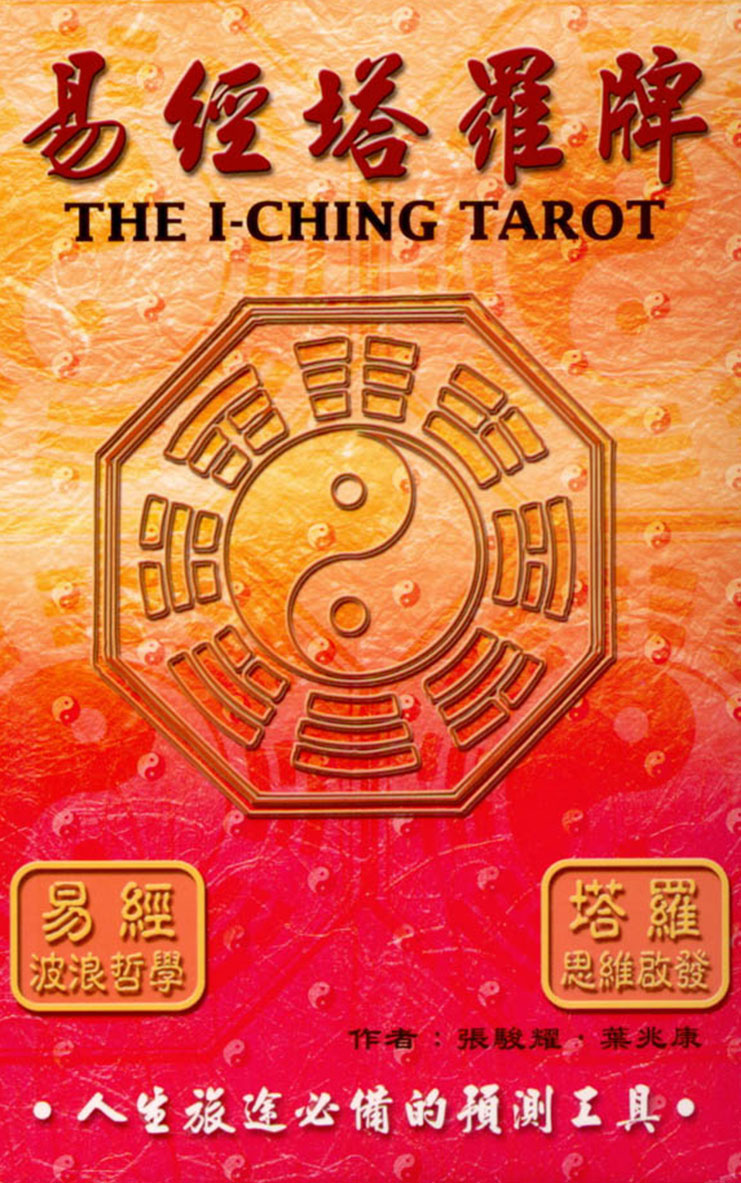ABOUT THE I-CHING
The I-ching can probably go on the shelf marked "Oldest Books on Earth". The Chinese character "Yi" (opposite page) is made up of two characters: sun and moon symbolizing the universal law of constant change from night to day, summer to winter, life to death. Because of this, the I-Ching is also called the Book of Change.
Its composition was an on-going effort spanning many centuries. It was ancient China's protocol to attribute important inventions and authorships to its emperors. In line with this practice, the authorship of the I-Ching was attributed to Fu His, the legendary ruler of China around 3,000 B.C. It was said he was intrigued by the eight trigrams on the shell of a tortoise he found. These eight trigrams form the backbone of the 64 hexagrams which make up the I-Ching.
The 64 hexagrams, being individual combinations of lines and dashes, (solid-male or yang; broken-female or yin) represent situations or 'codes' to the world of commerce, polities, family and social affairs which are inextricably tied up with the elemental forces. King Wan of the State of Chau wrote 64 short paragraphs explaining each of the hexagrams. Since then many distinguished philosophers including Confucius have added commentaries. Eventually, the I-Ching as a collection of wisdom, philosophy, fine poetry, as well as a book of divination, was born.
The introduction of the I-Ching to the West began during eighteenth century Europe, but only became widely known through the translation work of the German Christian, Richard Wilhelm. Wilhelm was a missionary and made it his task to translate the I-Ching whilst preaching in China. His work was later rendered into English in 1950 by Cary R Baynes for which a foreword was written by the prominent Swiss analytical psychologist, Carl Jung.
The I-Ching works by applying the meanings of the images of the drawn cards to predict the future. The story goes that many past Chinese leaders including Mao Zedong, Chiang Kai Shek and the Nobel physicist Dr. Yeung Zhen Lin, have used the I-Ching. It is also interesting to observe that the binary system of 0,1 that form the basis of modern computer technology, is very similar to the Yin-Yang theory, the basic principle of the I-Ching.
CONSULTING THE I-CHING TAROT DECK AND BOOK SET
Confucius - the greatest Chinese philosopher of all time - upheld an open mind, free of prejudices before any learning could take place. An open mind is prerequisite for tapping into the wisdom of this ancient art. The I-Ching does not give a Yes or No answer. As with any psychic advisor, do not let it dictate your actions or run your life. Listen to its suggestions. Be open and the images will put you in touch with your inner-self and thereby guide you to the best course of action to take.
The I-Ching guides us to be who we are = "the enlightened one" who is moral, righteous, honest, good and kind to all living things. Hence the advice it gives is of the highest order to put us on the path of greatest personal growth. The I-Ching does not encourage otherwise.
The I-Ching suggests and teaches. Ambiguous questions should be avoided e.g. "What will happen to me? "or "Will I be rich?". The inquirer needs to be more specific. Also, questions phrased precisely, e.g. "How will it affect me if I took on this new job?" will get more concise answers. With some questions, one may apply a time factor e.g. "How will my relationship with Mary develop over the next three months?" The I-Ching works on a deep level and the enquirer should be prepared to be mindful during its consultation. Only thus will the answer be revealed.
